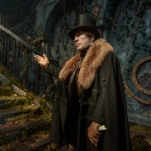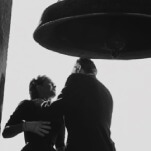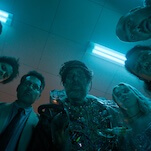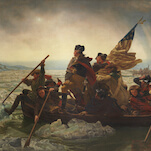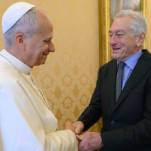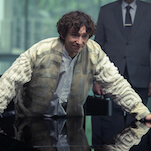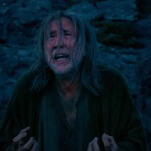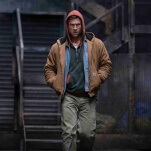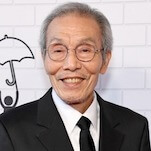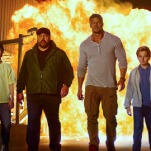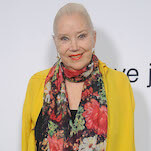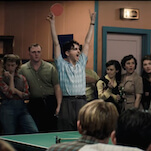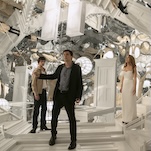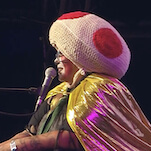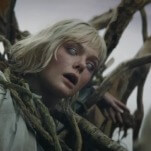10 episodes that make the argument for SCTV as one of TV’s all-time greats
With so many new series popping up on streaming services and DVD every day, it gets harder and harder to keep up with new shows, much less the all-time classics. With TV Club 10, we point you toward the 10 episodes that best represent a TV series, classic or modern. If you watch those 10, you’ll have a better idea of what that series was about, without having to watch the whole thing. These are not meant to be the 10 best episodes, but rather the 10 most representative episodes.
Is SCTV the greatest sketch show in the history of television? As Dan Duryea says in Winchester 73 when Shelley Winters contemptuously calls him the fastest draw in Texas: “Texas? Lady, why limit me?” During its peak in the early ’80s, it wasn’t considered too off-the-wall to call the critically beloved, perennially low-rated show the greatest series ever made for commercial TV in North America. In 1983, critic James Wolcott called it “the only entertainment show on TV that matters.” A year later, David Marc published Comic Visions, his landmark critical study of TV as it was before cable and home video fully changed the landscape, and argued that it was an essentially comic medium; the commercial pressures and the narrative limitations that the networks imposed on creators because of those pressures, and viewers’ awareness of those limitations, made it impossible for writers and directors to create real drama, or for viewers to really take anything they saw on TV seriously.
At the same time, comedians who’d grown up with TV looked at it differently from older comics, like Bob Hope or Johnny Carson, who “spoofed” popular TV shows by dressing up as Columbo or Batman and then reeling off the same old cookie-cutter one-liners they might use in any sketch. Marc suggested that it represented a new artistic maturity for the medium when young comedians began using TV to do satire that had an informed attitude about what was on the box and the relationship that audiences had with it. Saturday Night Live may have gotten there first, but SCTV used this approach to construct its own universe through its parodies, its regular cast of characters, and the behind-the-scenes glimpses of life at the network. “SCTV,” wrote Richard T. Jameson in Film Comment, “builds on the recognition that we don’t so much watch TV as live with it.”
The show got off to an undistinguished start. In 1976, Andrew Alexander, the operator of the Toronto branch of the Second City improv company, decided to plow some of the local talent into a half-hour syndicated TV show. Second City people were brought in from Chicago as consultants during the planning phase, and one of them—some reports give the credit to improv legend Del Close—suggested using the idea of an imaginary, struggling TV network, situated in the tiny town of Melonville, as a framework that could support a lot of different gags. The first “season” consisted of 26 episodes that turned up sporadically on late-night TV over the course of more than a year, and the earliest ones look as if the people who’d made them weren’t sure they’d ever get to make another. But gradually, the budget got a little better, the makeup and other production values got a lot better, and the cast of writer-performers really began to relish the possibilities of the mock-“broadcasting day” format.
The cast also began to create peerless impressions of TV and movie celebrities and familiar TV types, as well as original characters trapped in the ninth circle of show-business hell: mealy-mouthed station chief Guy Caballero (Joe Flaherty), who looked like Gregory Peck playing Josef Mengele in The Boys From Brazil and rode a wheelchair “for respect”; singer-comedian Bobby Bittman (Eugene Levy), who might have been exiled from Vegas for lowering the tone of the room; failed sexpot “entertainer” and eternal candidate for an intervention Lola Heatherton (Catherine O’Hara); and sweat-soaked, beady-eyed hedonist hustler and one-man media conglomerate Johnny LaRue (John Candy). In their strange way, these characters became the heart of the show. They were created by high-flying, creatively ambitious young artists who wanted to do work they could be proud of, but who, to pay their rent, had done time in terrible sitcoms and squalid movies—and would do so again. They had every right to look down their noses at the Bobby Bittmans and Lola Heathertons of the world and despise them for the mediocrity, and worse, they inflicted on audiences, but they were too honest not to also, on some level, relate to them.
SCTV hit its full stride during its third syndicated season, which premièred in the fall of 1980. NBC, looking to plug a hole on Friday late nights after the cancellation of its rock show Midnight Special (and reclaim some of its reputation for hip comedy after the fiasco of the 1980-81 season of Saturday Night Live), snatched it up, and the expanded 90-minute (including commercials) version ran from 1981 to 1983. There was a final, 18-episode season of 45-minute episodes produced for Cinemax in 1983 and 1984. Working for pay cable freed the troupe from worrying about ratings and enabled the members to turn to ever stranger and more personal sources of inspiration: singing-cowboy serials, Black Like Me, a mash-up of Porky’s and Das Boot, and, in the last episode, clips from Of Human Bondage given the What’s Up, Tiger Lily? treatment, interspersed with SCTV characters begging viewers to send money in to keep the show alive a little longer, so they wouldn’t have to return to the salt mines. But by then, half the cast—Candy, O’Hara, Rick Moranis, and Dave Thomas—were getting Hollywood offers and were too busy (or exhausted) to return to regular active duty, and by the time the curtain fell for the last time, the seams were starting to show. (The best thing to come out of the Cinemax period was a one-shot special, The Last Polka, starring Candy and Levy as the musical brothers from Eastern Europe, Yosh and Stan Shmenge.)
Even if the show petered out in the end, these 10 episodes display its comedic prowess at its height.
“On The Waterfront Again” (season two, episode 19): One of the most useful devices on SCTV was the talk show, a handy way to raise any topic or drag in any celebrity the show wanted to skewer. The unchallenged king of SCTV talk-show hosts was Sammy Maudlin (Flaherty), whose show was modeled on Sammy And Company, a syndicated celebration of the art of ass-kissing hosted by Sammy Davis Jr. in the mid-’70s. In this episode, an entire episode of The Sammy Maudlin Show is devoted to letting Bobby Bittman (in the Brando role) and his co-stars plug their TV-movie remake of On The Waterfront, complete with clips of Bobby and his leading lady, Lola Heatherton, in action. Making entertaining fun of terrible acting is a tough trick to pull off, but Levy and O’Hara make it look easy.
“Play It Again, Bob” (season three, episode seven): At a time when Woody Allen was being celebrated for having moved “beyond” comedy, SCTV arranged a fantasy meeting between Allen (Moranis) and the comedian he’d credited as an influence on his early screen persona, Bob Hope (Thomas), resulting in a classic study of the push-pull attraction of two wildly contrasting types. This was Moranis’ first season on the show, and his genius for parodying dithering, self-styled intellectual types (as also seen in his genius impressions of Dick Cavett) gave the show a whole new line of attack. His performance as Allen is as perfect as would be expected, but Thomas’ Bob Hope impression is a thing of uncommon beauty: No one else who’s tried imitating Hope has come close to it.


